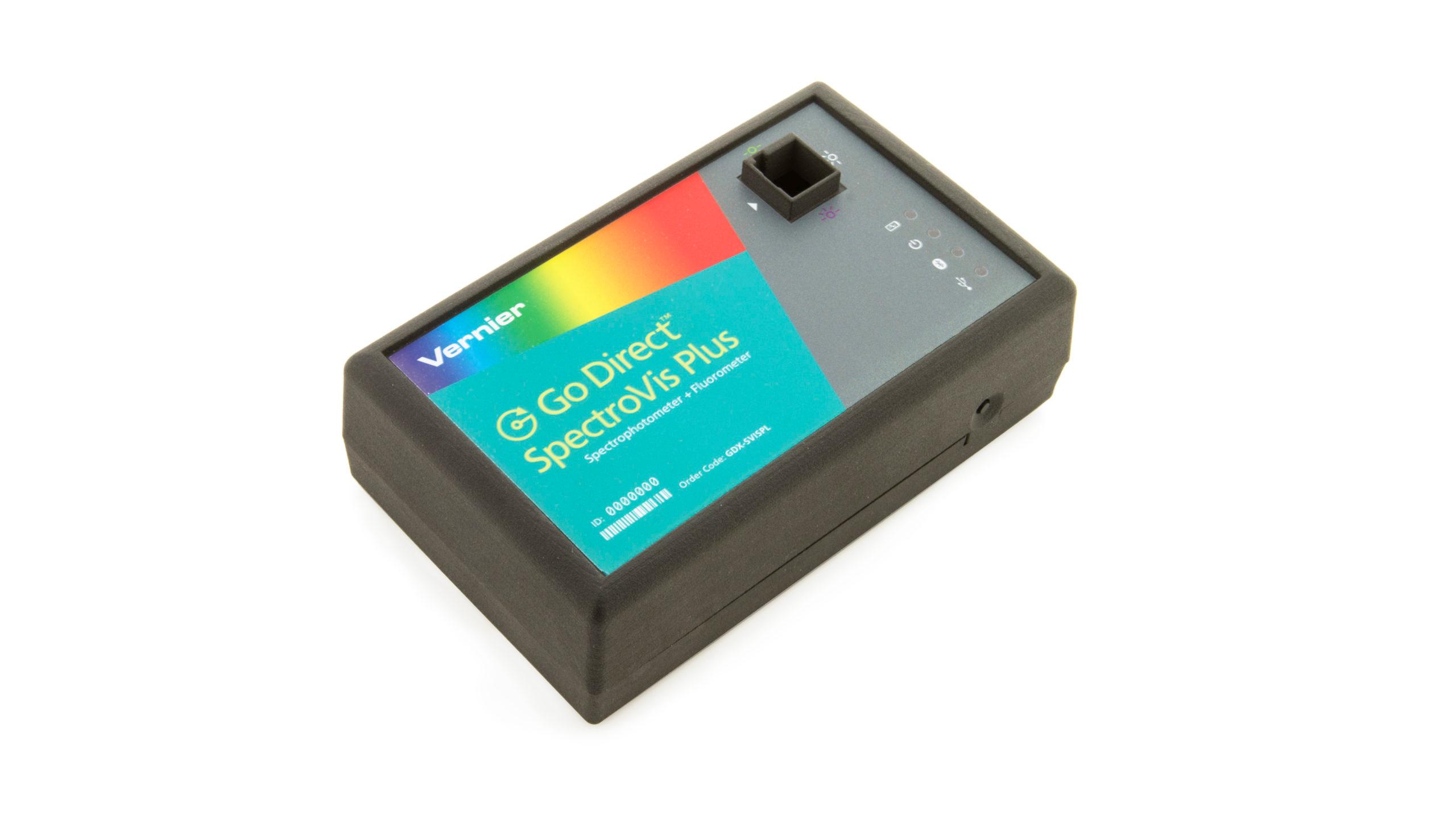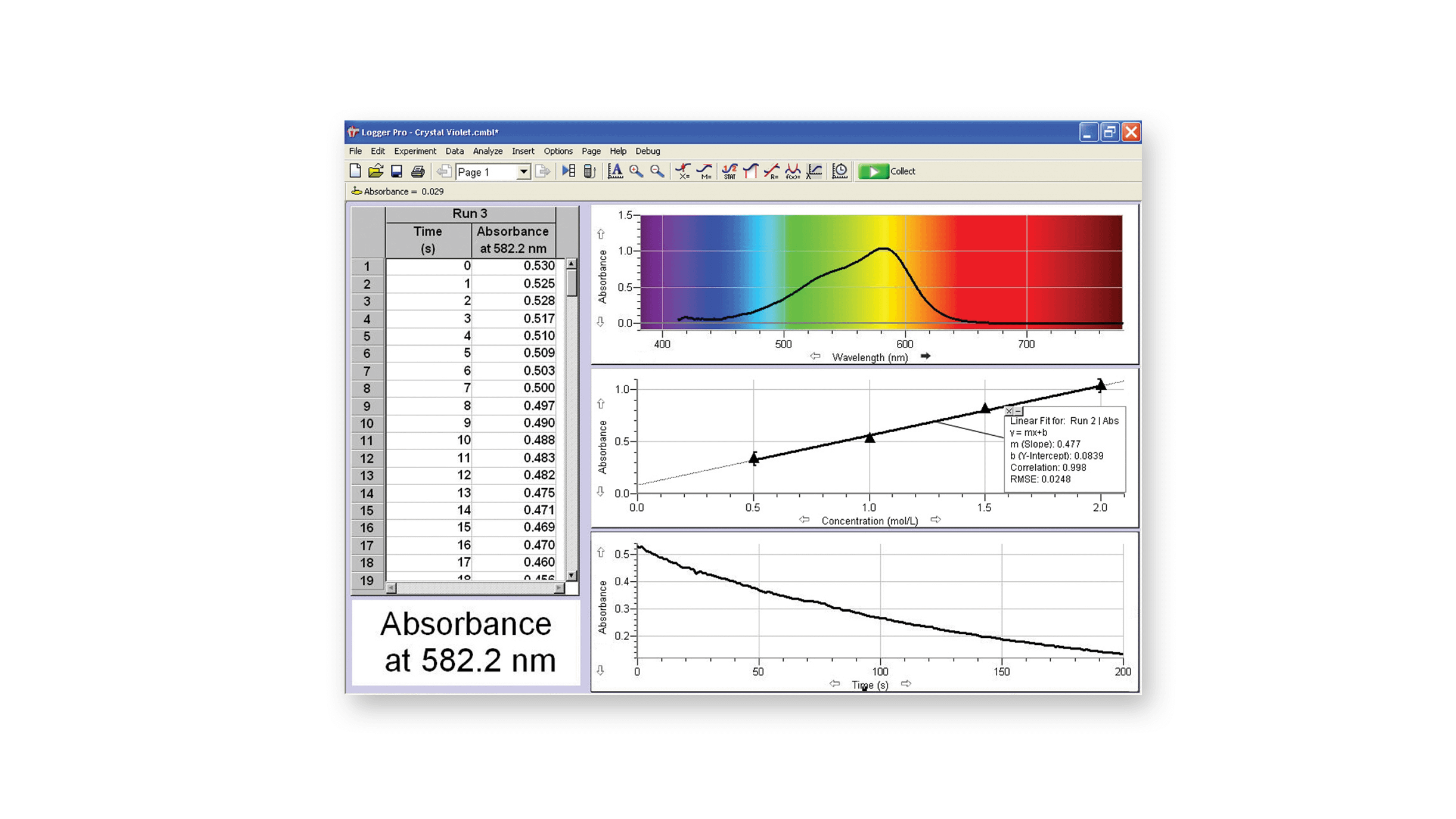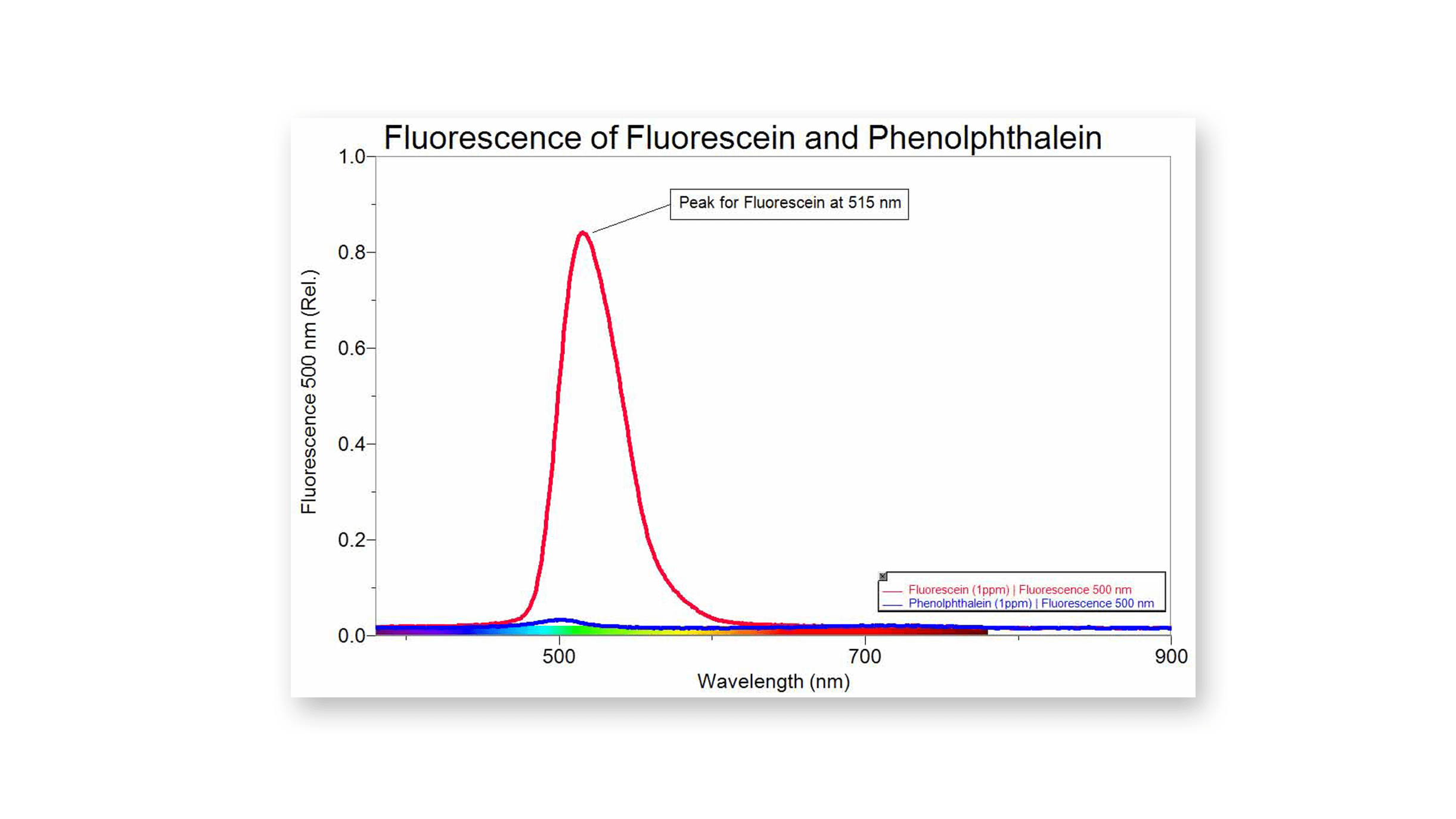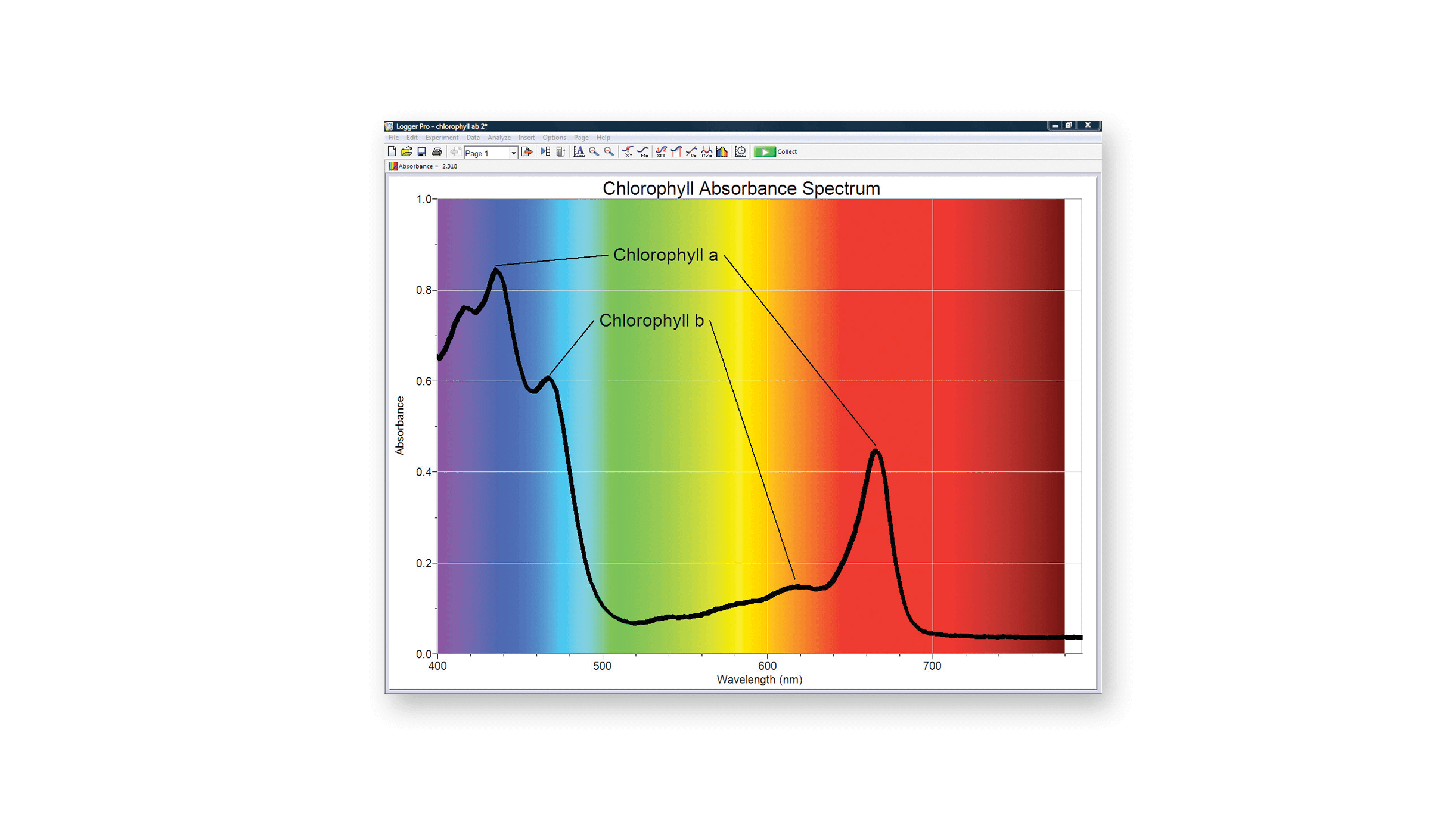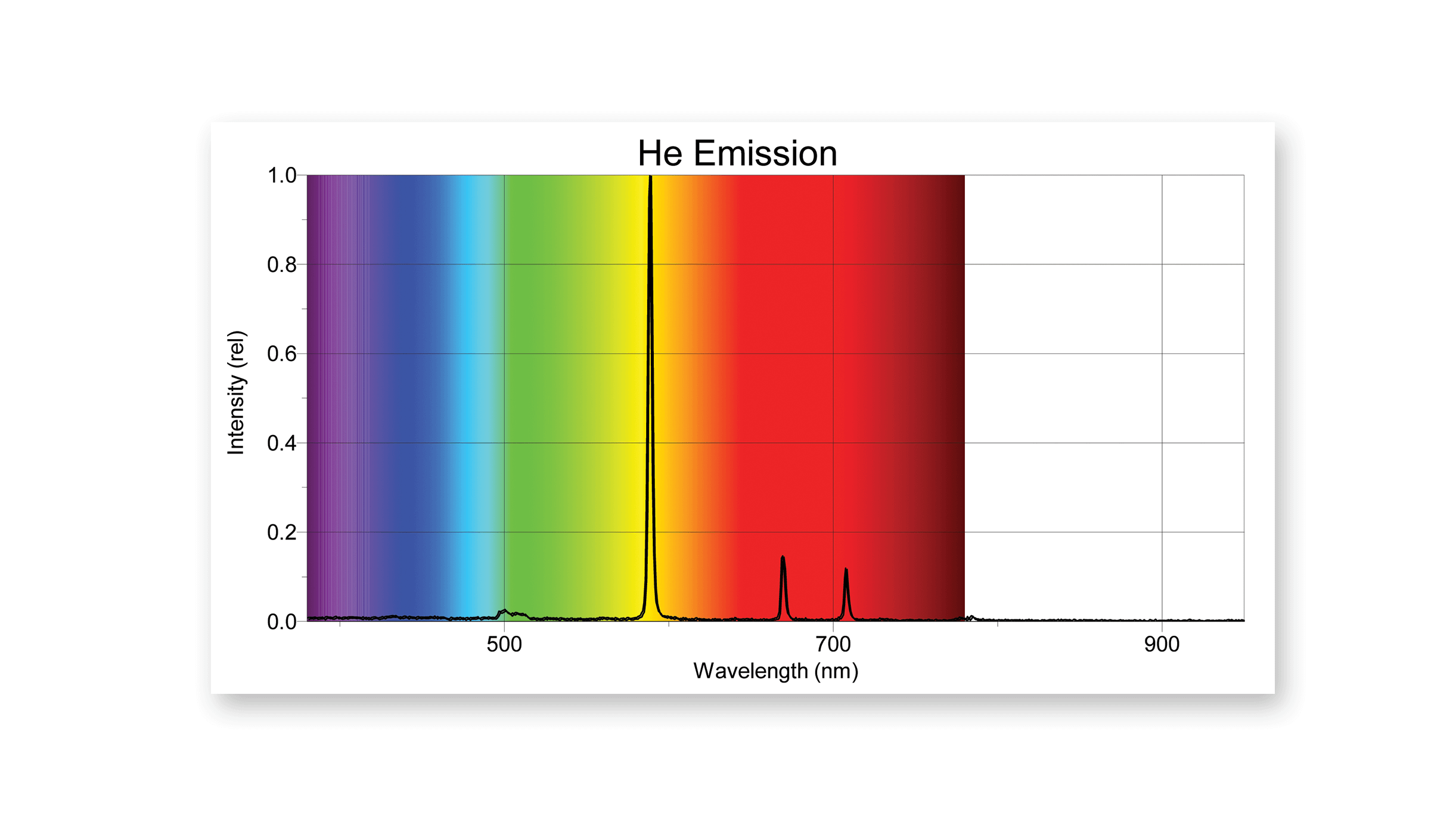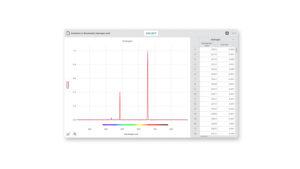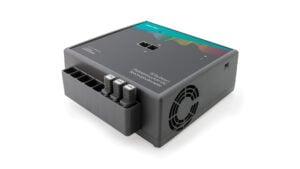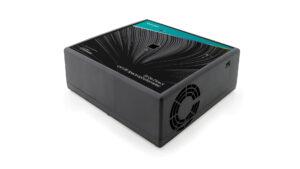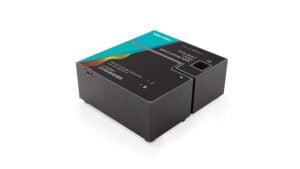Introduce your students to spectroscopy with the affordable Go Direct SpectroVis Plus Spectrophotometer. Capable of connecting wirelessly or by USB, this device can easily collect a full wavelength spectrum (absorbance, percent transmittance, or intensity) in less than one second. Once the peak wavelength is determined, you can establish the concentration of a solution (Beer’s law) or monitor rates of reactions. A low light path allows the Go Direct SpectroVis Plus Spectrophotometer to be used for microscale labs and biochemistry applications with micro and semi-micro cuvettes.
The Go Direct SpectroVis Plus Spectrophotometer can be used in a variety spectroscopy experiments:
- Determine peak wavelength to collect data on solution concentration for studies of Beer’s law or to monitor rates of reaction.
- Collect a full wavelength spectrum to measure absorbance, percent transmittance, fluorescence (at 405 nm or 500 nm excitation), or emissions.
- Conduct enzyme kinetics experiments.
- Engage in equilibrium studies of absorbance vs. time or absorbance vs. concentration.
- Perform colorimetric or fluorescent bioassays. Use the Go Direct Fluorescence/UV-VIS Spectrophotometer for quantitative fluorescence analysis.
- Use the Spectrophotometer Optical Fiber to measure emissions from flame tests or other light sources. For more detailed emissions analysis, consider the Go Direct Emissions Spectrometer.
How Go Direct SpectroVis Plus Works
The Go Direct SpectroVis Plus Spectrophotometer employs an LED and tungsten bulb to transmit light through a high-quality diffraction grating. The diffracted light is sorted and collected by the linear CCD array detector.
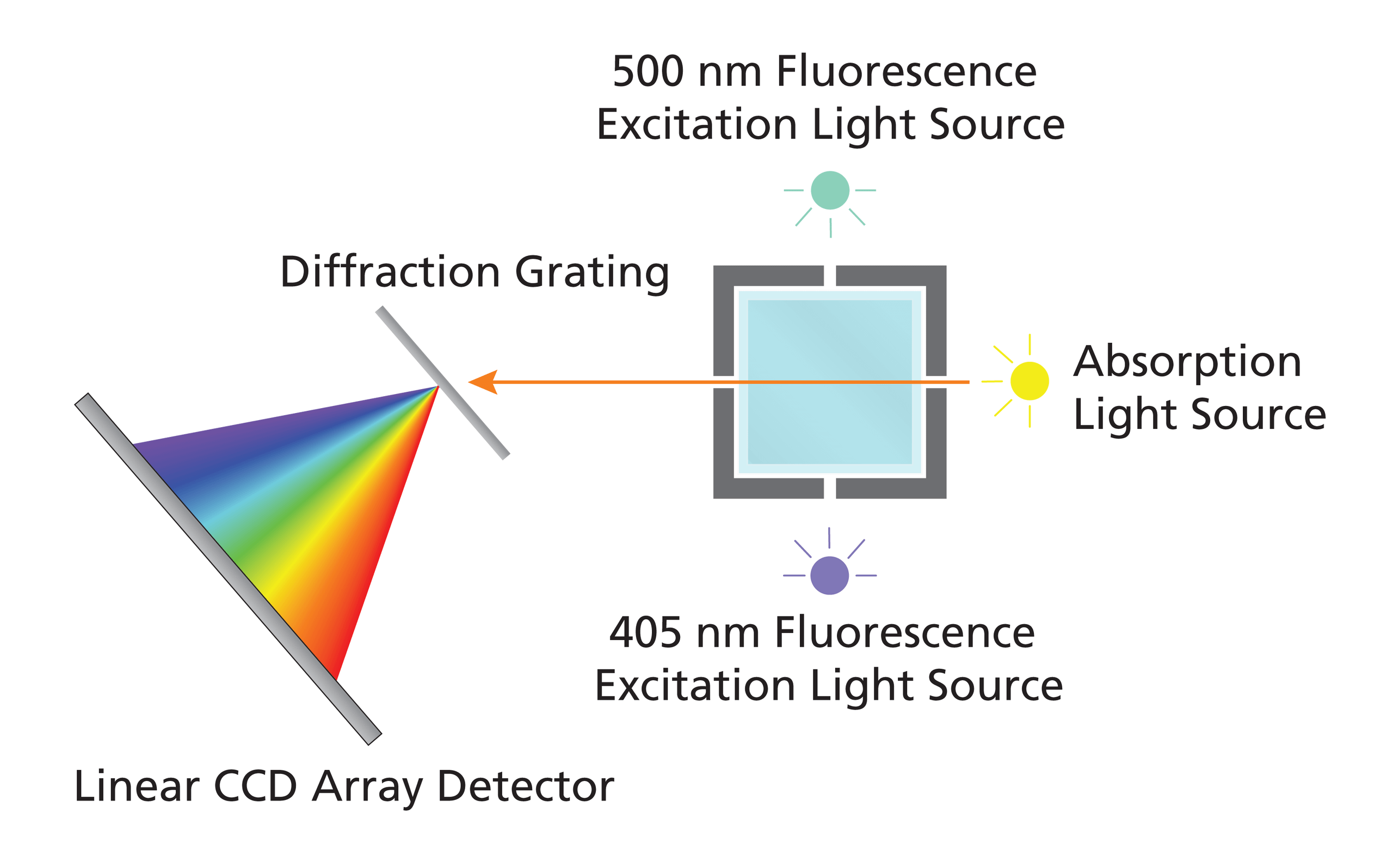
Spectroscopy with Go Direct SpectroVis Plus
To use the Go Direct SpectroVis Plus Spectrophotometer, download our free Spectral Analysis app. The app is compatible with computers, Chromebooks, and mobile devices. Students may also connect to LabQuest® 3 to perform analysis.

